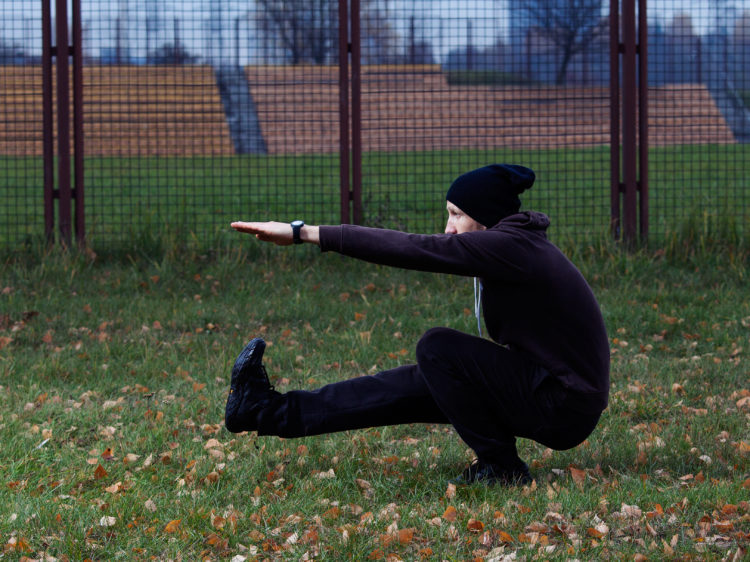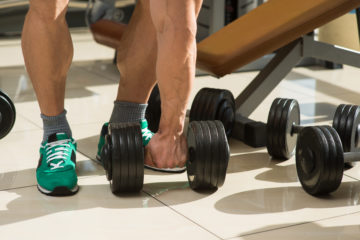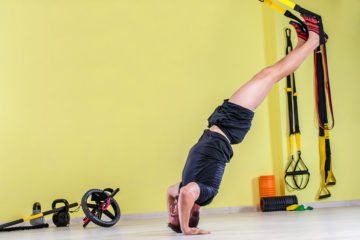The Athlete’s Conundrum: How to Treat Overtraining Syndrome

By Wanda Marie Thibodeaux
Exercise makes you stronger and more fit, assuming you give your body what it needs to recover. When you push too hard, you might encounter what’s known as overtraining syndrome. For optimum health, this needs to be treated, but there is more than one way to go about it.
Overtraining Overview
Overtraining syndrome refers to symptoms that arise from too much physical activity. Normally, it’s attributed to sports and weight training, but you can experience symptoms even if you don’t consider yourself an athlete, just from too much everyday physical exertion. Simply put, the body doesn’t get the opportunity to recover from the demands you place on it. The result is symptoms such as fatigue, muscle tenderness and soreness, poor coordination, injury increases and a loss of performance or strength. Additional symptoms such as nausea, disrupted hormonal or menstrual cycles, irritability or depression, increased allergies or infections, sleep issues and a decrease in appetite can also be present.
Treatment Approach #1: Rest
Under normal conditions, when you exercise appropriately, your activity puts some stress on body systems and tissues. If you give your body time, it will react and repair, which generally means you get more efficient or stronger. If you try to train again, however, you very quickly can undo all the repairs or do damage faster than the body can fix it. For most people, therefore, the simplest way to address overtraining is to reduce the amount of activity they are doing. Sometimes this simply means cycling your workouts so you don’t work the same muscles or systems every day. Other times, it requires a complete break from your activities.
Treatment Approach #2: Dietary Changes
Some people find that they feel better if they up the amount they are eating. This increase in calories ensures that you have the energy required to complete the myriad of processes involved in recovery. That said, the quality of the fuel–that is, the macro- and micronutrients you’re getting–matters. You might need to pay more attention not only to how much you take in, but also to the specific types of foods you’re consuming.
Treatment Approach #3: Hot, Cold and Massage Therapies
A huge symptom of overtraining is soreness and tenderness. Hot and cold therapies both are effective at relieving pain and tension. Options such as alternating hot and cold showers or heating pads and ice packs are examples. Massage therapy also can help you relax.
Treatment Approach #4: Environmental/Routine Changes
For some people, the amount of exercise is not necessarily a problem. It’s the exercise coupled with other things that creates an issue. For instance, your body might have more trouble recovering if you have been traveling a lot, are under significant stress at work or aren’t able to sleep consistently because of a new baby. In these cases, you might not have to adjust your workouts if you can get rid of the other stressors, but depending on exactly what those stressors are, this can be very difficult.
Treatment Approach #5: Feel Good Activities
Experts know that exercise releases “feel good” chemicals known as endorphins. They believe that, in some individuals, the body can become “addicted” to exercise, craving that endorphin release. Endorphins can be released from many other activities, such as simply enjoying some laughs at a comedy club, eating a few bites of dark chocolate, riding a roller coaster or even making love. In other words–you don’t need to overtrain just to be happy, and substituting exercise with other things can open up the door for physical recovery.
Treatment Approach #6: Therapy
Unfortunately, some people who overtrain do so because they are driven by harsh psychological factors. For instance, you might hit the gym over and over because you don’t feel like you look good enough for others, or because you feel like it is a “safe” way to punish yourself. Many people use exercise as a way to deal with feelings of anger, pain or anxiety that have very deep, complex roots. Various forms of therapy, particularly cognitive behavioral therapy, are often helpful here. Once you deal with the underlying factors, you can break your workout habit and let yourself rest.
Conclusion
Overtraining is a condition that happens when your body cannot recover based on physical demands. Your first treatment route should be rest, but changes to your diet or routine can help as well. Hot, cold and massage therapies are effective at relieving some of the muscle tension and soreness that often is present. You might find that using other activities helps elevate your mood so that you don’t need to resort to exercise to feel good as much. If your overtraining relates to something psychological, professional help is readily available and can be the key to regaining your health.
Please note: That any suggestions are based on personal experiences and knowledge garnered from self-education and/or readily available news sources. Sources are available upon request. Neither Menofvalue.com or any of our writers offer any guarantees or are responsible for the consequences for any advice taken.
References:
Jenkins, M. (1998). Overtaining Syndrome.
Swan, R. (2007). Overtraining.







No Comment